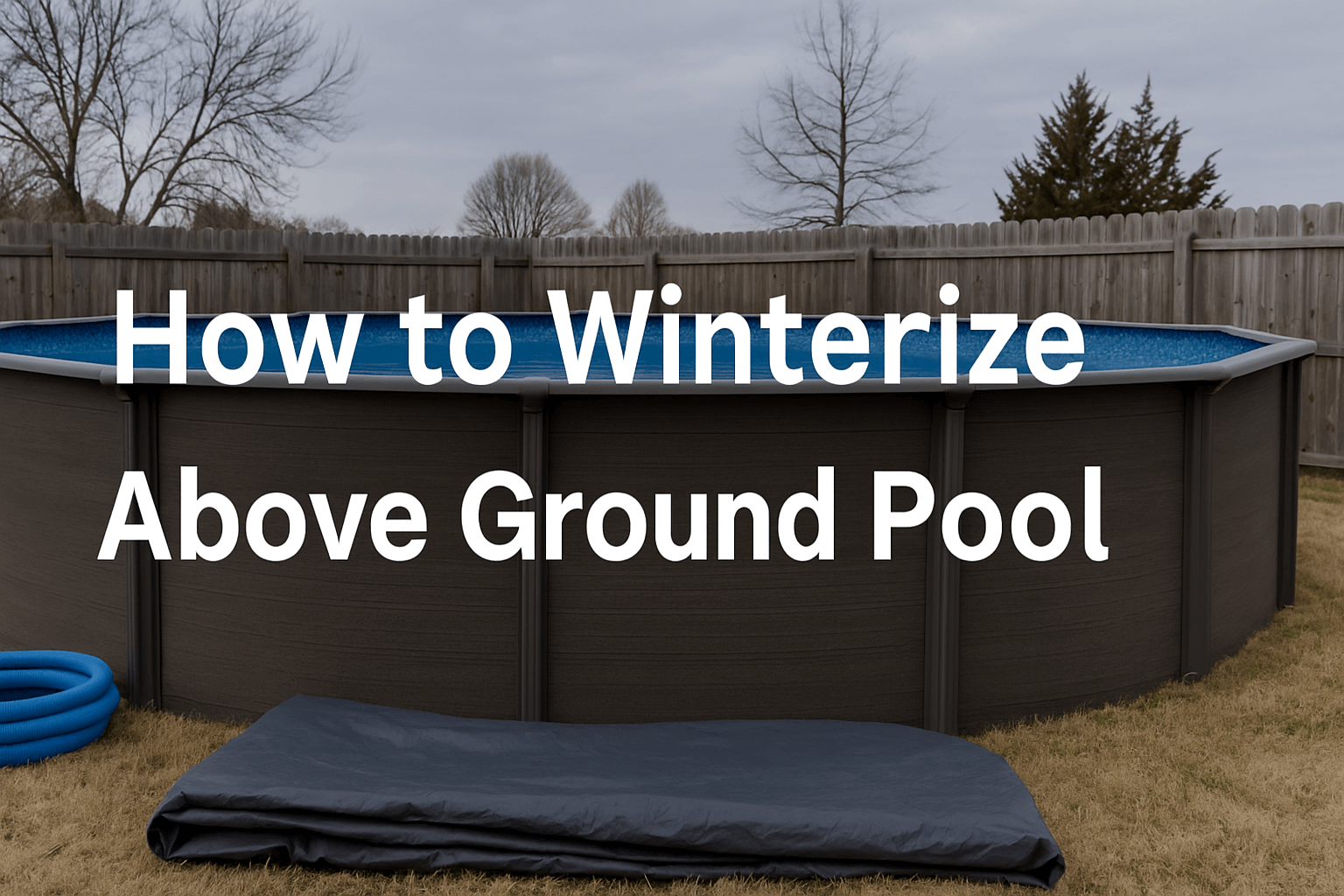
How to Winterize Above Ground Pool?
Dreading the end of pool season already? You’re not alone. But timing matters just as much as the process.
The best time to close your above ground container pool is when the temperature drops consistently below 15°C. That’s usually late September or early October in the UK.
Why Waiting for the Right Temperature is Crucial
If you cover your pool too early while the water’s still warm, you’re basically giving algae an all-inclusive resort to grow in over winter. Warm water, trapped debris, and zero circulation? Not a good mix.
Wait until the weather cools properly. This keeps algae at bay and makes spring opening a whole lot easier.
The Risks of Closing Too Early or Too Late
Shut it down too early and you risk green water and funky smells come spring. Wait too long, and you’re flirting with frost damage—especially to your skimmer and pipes.
It’s a bit like trying to beat the rush at the airport. Time it right, and everything runs smooth. Miss the window? You’ll pay for it later.

Essential Preparations Before Closing
Deep Cleaning the Pool and Balancing Chemicals
Think of this as your pool’s final spa day before its winter nap.
Start by skimming, vacuuming, and brushing every inch of the pool. Leaves, dirt, bugs—get it all out. Then, test the water and balance your pH, alkalinity, and calcium hardness.
Your goal? Leave the water as clean and stable as possible before shutting things down.
Removing All Accessories and Equipment
Take out anything that doesn’t need to freeze: ladders, floats, toys, skimmer baskets—you name it.
Give everything a good rinse and let it dry. Chuck it in the shed or garage so it doesn’t crack or fade in the cold.
It’s one of those five-minute jobs that’ll save you hours next spring.

Step-by-Step Guide to Winterizing
Draining and Protecting the Plumbing
Lowering the Water Level Below the Skimmer
Let’s be clear—this isn’t about draining the entire pool. You just need to lower the water until it’s below the skimmer opening.
That way, if it freezes, the expanding ice won’t damage your skimmer or fittings. Trust us, replacing cracked pool parts isn’t how you want to spend your first sunny weekend in April.
Draining Pipes and Plugging the Skimmer
If your pool has external plumbing, make sure it’s empty. Use a wet vac or blower to clear the lines if needed. Then, add pool antifreeze (yes, it’s a thing) and seal everything up with winter plugs.
Don’t forget to block off the skimmer too. Some people use a Gizmo or an expansion plug—it’s like popping in a cork to stop any water getting in.

Covering and Securing the Pool
The Benefits of Using an Air Pillow
For above ground and container pools, an air pillow is your secret weapon.
Pop it in the middle before covering the pool. It helps break up any ice that forms and reduces pressure on the pool walls.
Think of it as a shock absorber for your cover—and your wallet.
How to Properly Install a Winter Cover
Lay the cover flat and smooth, making sure it’s evenly placed over the pool. Use the cable and winch system (or cover clips, or water bags) to lock it down.
Don’t leave it loose—it’ll flap, fall in, or let in leaves. And once the leaves start, it’s like fighting off a soggy avalanche.
If your cover came with a manual, now’s the time to read it (yes, really).
Note: Always follow your specific pool manufacturer’s winterization guidelines in addition to the steps above. Different pool types and materials may require special care, and the manufacturer’s instructions will ensure you’re protecting your warranty while keeping your pool in the best condition possible.
Have you checked out our other posts?
How To Cool Above Ground Pools?
How To Drain Above Ground Pool?
How To Level An Above Ground Pool?
Should I Cover Above Ground Pool?
When Closing Above Ground Pool?
How Many Hours A Day Should An Above Ground Pool Run?



Leave a comment